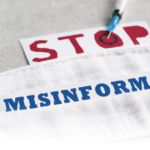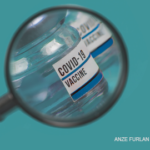 Although the picture is still evolving, thus far the impact of immunosenescence on COVID-19 vaccine immune response in people 80 and older appears to be minimal.1-3 Researchers continue to learn what factors may affect long-term vaccine efficacy in this group, and have recognized a potential benefit of employing an extended vs. standard schedule for the administration of the second dose of COVID-19 mRNA vaccines.
Although the picture is still evolving, thus far the impact of immunosenescence on COVID-19 vaccine immune response in people 80 and older appears to be minimal.1-3 Researchers continue to learn what factors may affect long-term vaccine efficacy in this group, and have recognized a potential benefit of employing an extended vs. standard schedule for the administration of the second dose of COVID-19 mRNA vaccines.
Immunosenescence
Immunosenescence is the process of immune aging that impacts overall immune response in older populations. With aging, the immune system displays functional differences in both the innate and adaptive immune systems. This can impact an individual’s ability to successfully defend against a live infection or mount an effective vaccine response. For example, the elderly may show alterations in both the quantity and quality of T cells—perhaps particularly memory cells. In some cases, antibodies—including vaccine-induced antibodies—may not work as effectively.4
Cassandra Calabrese, DO, a rheumatologist and infectious disease specialist and assistant professor of medicine at the Cleveland Clinic, Ohio, explains that immunosenescence is part of the reason older age is a risk factor for serious infection in rheumatic disease patients.
She also notes the impact of immunosenescence on vaccine responsiveness varies. “For some vaccines, like the recombinant zoster vaccine, the impact of older age on effectiveness is less compared to that seen with seasonal influenza vaccine,” she says. For influenza, people 65 years and older must be given a higher vaccine dose than younger people to achieve a similar immune response.
COVID-19
Many studies on COVID-19 vaccine response in rheumatic patients have been designed and analyzed with statistical adjustments for age so potential differences in response can be recognized. Dr. Calabrese notes that, at this time, although older age appears to have some impact on the effectiveness of certain COVID-19 vaccines, the difference is not huge. We can expect to learn more as data accrue.
Trials of COVID-19 vaccines used to establish Emergency Use Authorization by the U.S. Food & Drug Administration (FDA) included few elderly patients. For example, for the Pfizer/BioNTech vaccine, only around 4% of the participants receiving the vaccine as part of the phase 3 trial were age 75 or older.5
Researchers have been eager to see if immunosenescence may impact vaccine response in the general population.
Helen Parry, MBChB, FRCPath, PhD, and a team at the University of Birmingham, U.K., have been studying the issue of immunosenescence in the context of COVID-19 vaccines. Dr. Parry is a National Institute for Health Research academic clinical lecturer in the U.K. Because of the higher risk of poor outcomes in the elderly population, their increased susceptibility to infection and potentially reduced vaccine response, it is even more important to understand how older people can be best protected.
Dr. Parry and her colleagues have studied the immune response to the Pfizer and the AstraZeneca vaccines. Public Health England decided early in its vaccination program to extend the interval between the first and second vaccine to accelerate the number of people immunized with at least one vaccine. Because of this, researchers have also been able to study how delayed vaccination schedules have affected immune response in elderly individuals.
In three studies, Dr. Parry and colleagues collected data from people 80 years and older who were living independently. Potential medical conditions and medications were not specified. In one study that included 76 participants who had received one dose of the Pfizer vaccine, the team found that 93% had a detectable COVID-19 antibody response five weeks after vaccination.1 Another study looked at 100 participants who had received a second dose on a standard schedule, three weeks after the first dose. All showed antibody responses two weeks after their second Pfizer vaccine, and 98% had high titers.2
Potential Benefit from Delayed Vaccination Schedule
In a third study, Dr. Parry and colleagues contrasted the results from 172 participants who had received the second dose of their Pfizer mRNA vaccine at a standard three-week interval or on an extended dosing schedule (11–12 weeks later).3
In analyses performed at two to three weeks after their second vaccine dose, 100% of participants displayed a protective antibody response. However, in terms of the specific antibody titers, participants who received the vaccines on the extended schedule had a 3.5-fold increase in magnitude.3
“We were absolutely delighted with the titers we were getting back [in the standard interval group]. Then, to get this extended vaccination even higher still—we really couldn’t believe it,” Dr. Parry says.
The picture was nuanced. Participants who received their second dose at a later interval had a diminished T cell immune response in terms of the number of T cells producing interferon γ. The significance of this remains unclear. Dr. Parry notes that much of the research on finding a potential correlate of protection—a lab value that entails protection against future infection—has focused on antibodies instead of cellular responses, partly because they are easier to study.
Dr. Parry points out that in the context of previously developed vaccines against other pathogens, a three-week interval between a first and second vaccine dose is relatively short. “What you are trying to do with that second vaccine,” she explains, “is stimulate memory B cells that you’ve made from your first vaccine. That takes time, because you have to generate the memory B cells. When you go in with your second vaccine, you really want your memory B cell pool to be primed and ready to go.”
Dr. Parry also points out the vaccine developers may have landed on this interval partly based on established work performed on mRNA vaccines as cancer therapies. Moreover, in a pandemic, companies were trying to make vaccines that could provide effective protection and receive approval as quickly as they could safely do so; a longer interval may have slowed things down.
This extended booster strategy is still being used in parts of the world where COVID-19 vaccine access is limited. Dr. Parry notes the approach makes a lot of sense from a public health perspective, because it accelerates the percentage of the population that has received coverage from at least a single vaccine dose.
Dr. Calabrese doesn’t think a delayed dose approach makes sense in the U.S., where vaccine hesitancy is the key problem, not vaccine availability. Although a single mRNA vaccine dose does give some protection, she notes it is not complete, and she and her colleagues have treated patients who contracted SARS-Co-V-2 after an initial vaccine dose.
She also adds the Pfizer vaccine is 95% effective using the current two dose-timeline—very high in the context of vaccine development more broadly, making it unappealing to alter the current schedule.5
Potentially, however, the strategy may inform decisions on the need for vaccine boosters, particularly in the context of new disease variants. In such a setting, achieving a maximum antibody boost after an ideally timed dose may make a difference, particularly for elderly patients or those on immunosuppression.
“Although [a delayed second dose] approach has the potential to be beneficial for immune responses in older adults in the long term, the correct use of the strategy is unknown at present.”
Ruth Jessen Hickman, MD, is a graduate of the Indiana University School of Medicine. She is a freelance medical and science writer living in Bloomington, Ind.
References
- Parry H, Bruton R, Tut G, et al. Single vaccination with BNT162b2 or ChAdOx1 in older people induces equivalent antibody generation but enhanced cellular responses after ChAdOx1. Preprints with The Lancet.
- Parry H, Tut G, Faustini S, et al. BNT162b2 vaccination in people over 80 years of age induces strong humoral immune responses with cross neutralisation of P.1 Brazilian variant. Preprints with The Lancet.
- Parry H, Bruton R, Stephens C, et al. Extended interval BNT162b2 vaccination enhances peak antibody generation in older people. Preprint medRxiv.
- Gustafson CE, Kim C, Weyand CM, Goronzy JJ. Influence of immune aging on vaccine responses. J Allergy Clin Immunol. 2020;145(5):1309–1321. doi:10.1016/j.jaci.2020.03.017.
- Polack FP, Thomas SJ, Kitchin N, et al; C4591001 Clinical Trial Group. Safety and efficacy of the BNT162b2 mRNA Covid-19 vaccine. N Engl J Med. 2020 Dec 31;383(27):2603–2615.





